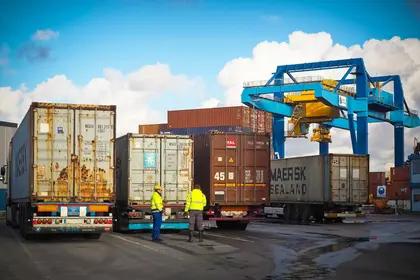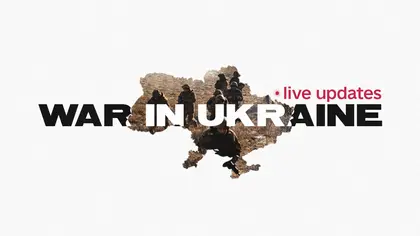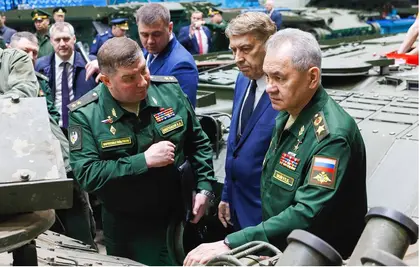How stable is the Ukrainian economy following Russia’s invasion of its neighbor?
To a large degree, the answer to this question depends on exports, or rather – on logistics. It is no coincidence that Russian attacks are increasingly aimed at transportation infrastructure. As a result, thousands of wagons and trucks with grain and metal cannot leave for the European Union (EU), while diesel tanks and fuel trucks, weapons and humanitarian aid cannot leave Europe for Ukraine.
Ukraine’s seaports are normally used to export more than 70% of all cargo worth about $47 billion. However, since Feb. 24, these seaports have been blocked by the Russian navy and anti-ship mines. This has left hundreds of thousands of tons of cargo trapped in ports and ships on Ukrainian territory. Some of this cargo has managed to be taken out by road and rail, leaving the bulk under fire or captured by the Russian military.
Ports are more important for the trade balance than for Gross Domestic Product (GDP). Due to the port blockade, the economy loses about $170 million every day. Ukraine has currently lost control of four ports: Mariupol, Berdyansk, Skadovsk and Kherson (concessionaire – Risoil and Georgian Industrial Group). Currently, transshipment is only possible on the Danube River, via the ports of Izmail, Reni and Ust-Dunaisk. To date, these sites have accumulated cargo belonging to Ukrainian farmers, waiting to be shipped.
There are two main contributors to dispatch delays. Firstly, the Ukrainian Danube Shipping Company (UDP) provides few barges to Ukrainian exporters of agricultural products; secondly, most foreign logistics companies are currently avoiding entering Ukrainian Danube ports due to high military risks. In addition, the aggressor tried three times to destroy the railway bridge near Belgorod-Dniester in order to cut off communication with Izmail, while the railway connection with Reni is through the territory of Moldova.
Since the beginning of the war, general freight traffic by rail has changed dramatically. Previously, a large share of export cargo was transported to the ports of the Black Sea. At present, it remains possible to transport export cargo only to the ports remaining at the mouth of the Danube (Izmail, Reni, Kiliya, Ust-Dunaisk) or the western border crossings.
For example, the Romanian Ministry of Transport has announced a tender for the reconstruction of railway infrastructure between the ports of Giurgiu and Galati to increase cargo capacity. The repair of this wide-gauge railway (3,583 kilometers) and the narrow-gauge railway (1,167 kilometers) from the port of Galati will take 60 days from the date of signing the contract on May 19, 2022. The cost of works is estimated to be 1.3 million lei (2 million Hryvnia).
Another railway junction existed until 1997 and was dismantled for scrap metal. This was in the south of Odesa Region – extending from Artsyz station through Berezino to Basarabyaska station (bypassing Transnistria). A reconstruction project has been under discussion since 2012 and practical steps have been taken since 2015, but they have sunk into bureaucracy, lack of money and lobbying for the interests of the port of Izmail. Restoring this track is becoming a strategic task for Ukraine, making it worth attracting EU assistance.
In total, Ukrzaliznytsia JSC has 13 junctions and freight border crossings with neighboring countries to the west and south of the country: four with Poland; two with Romania; two with Slovakia; two with Hungary and three with Moldova.
The daily capacity for delivery of freight cars via these crossings is 3,422 cars (222,000 tons). In terms of grain transshipment capacity, Ukrzaliznytsia can potentially transport 731 cars (up to 50,000 tons of grain) per day through these 13 border crossings. This equates to about 6.6 million tons of cargo potential per month, including 1.5 million tons of grain.
Unfortunately, only about 55% of this available potential is used. The daily transfer of goods from all connections is just over 1,900 cars (124,000 tons) spanning a range of goods. With respect to grain, only 43% of capacity is being used (314 grain cars carrying about 21,000 tons) per day.
The Prime Ministers of Ukraine and Poland signed a Memorandum on strengthening cooperation in the railways, which provides for the establishment of a joint logistics company for the two countries. An effective mechanism of cooperation between Ukrzaliznytsia and Polskie Koleje Państwowe (PKP) will allow for a dramatic increase in the volume of rail transportation of Ukrainian exports to the EU and to world markets through the Polish ports of Gdynia and Gdansk.
But cross-border infrastructure projects require major infrastructure investment and EU funding in the form of grants and financial assistance from the European Commission.
Ukrainian exporters (mainly grain, sunflower oil and metal) and importers (especially fuel) also need assistance in building multimodal terminals on the western borders, especially where there are 1,520 km and 1,435 km railway junctions.
Kyiv also needs to bring to an end the issue of revoking permits for international road transportation between Ukraine and the EU. The European Commission has already sent a proposal to the Council of the European Union to open negotiations on a road transport agreement. So far, Romania has become the fifth EU country to simplify requirements for Ukrainian carriers, following Latvia, Slovakia, Bulgaria and Hungary. Similar liberalization of transit is needed with Moldova, where an agreement has already been signed but not yet ratified.
Finally, Ukraine desperately needs to unify and simplify customs procedures with its western neighbors, the EU (Romania, Hungary, Slovakia and Poland) and Moldova. All these steps can save Ukrainian exports and preserve the financial stability of the country, which is extremely important for logistical victory over an aggressive Russia.
Viktor Dovhan is a transport consultant and was deputy minister of infrastructure between 2016 and 2019.
You can also highlight the text and press Ctrl + Enter






Comments (0)